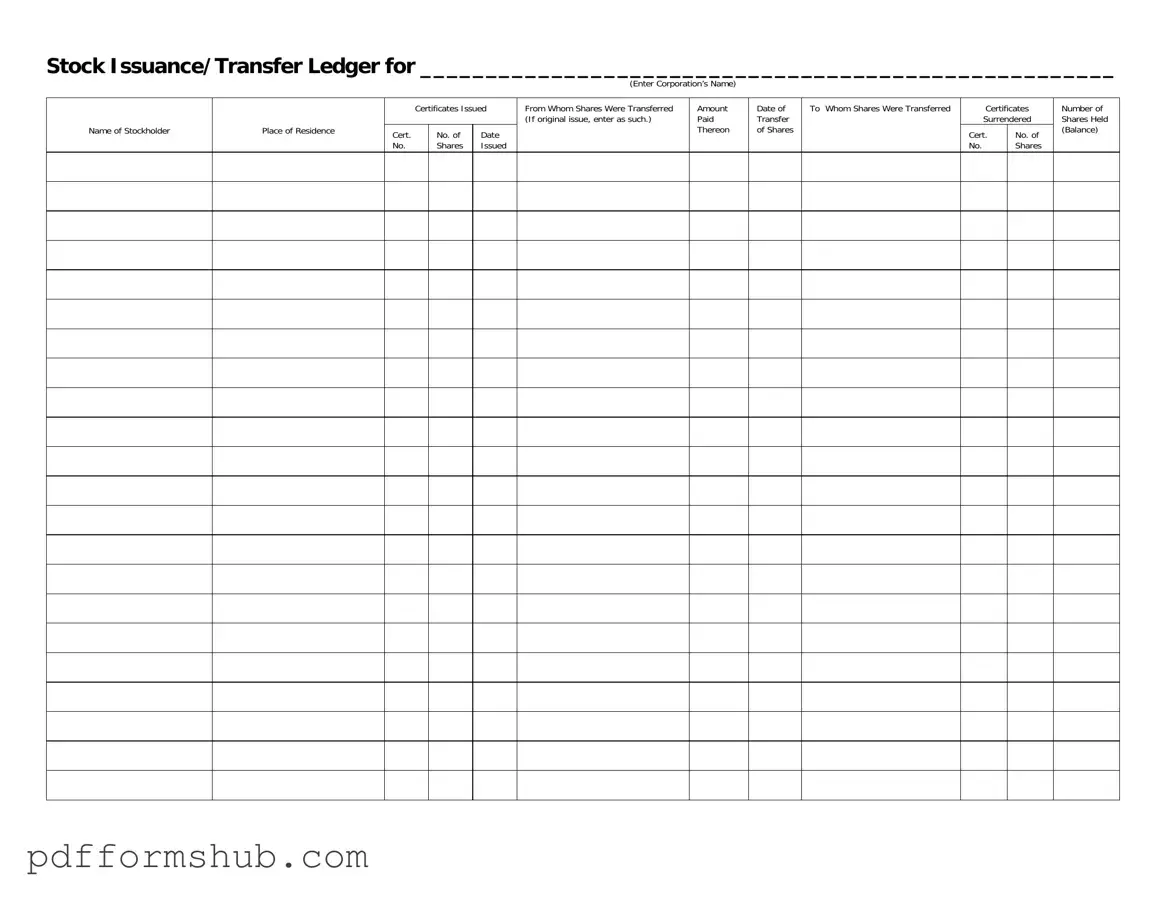Fill in Your Stock Transfer Ledger Form
The Stock Transfer Ledger form is a vital document used to track the issuance and transfer of stock within a corporation. It records essential details such as the stockholder's name, the number of shares issued, and the dates of transfers, ensuring transparency and accuracy in stock ownership. To efficiently manage your corporation's stock transactions, consider filling out the Stock Transfer Ledger form by clicking the button below.
Customize Form
